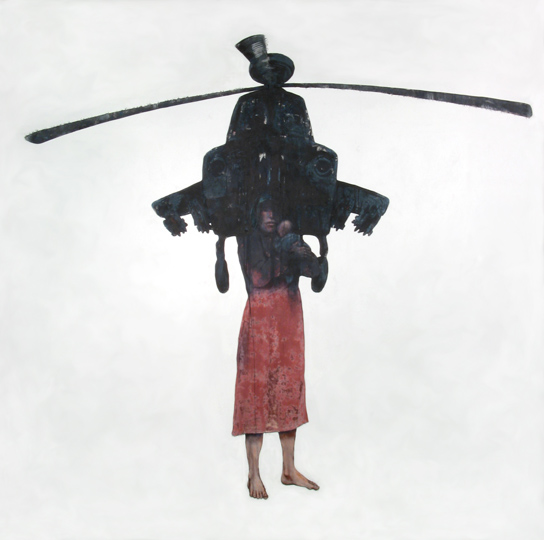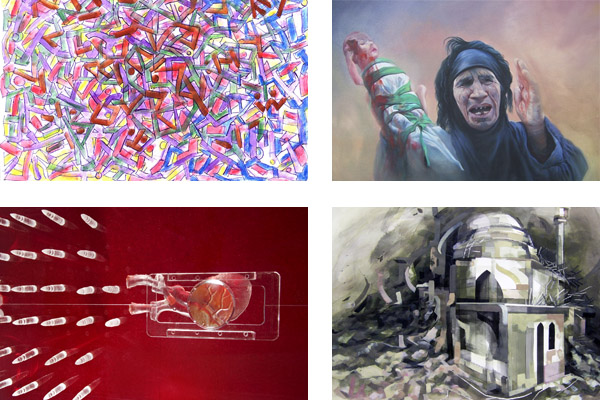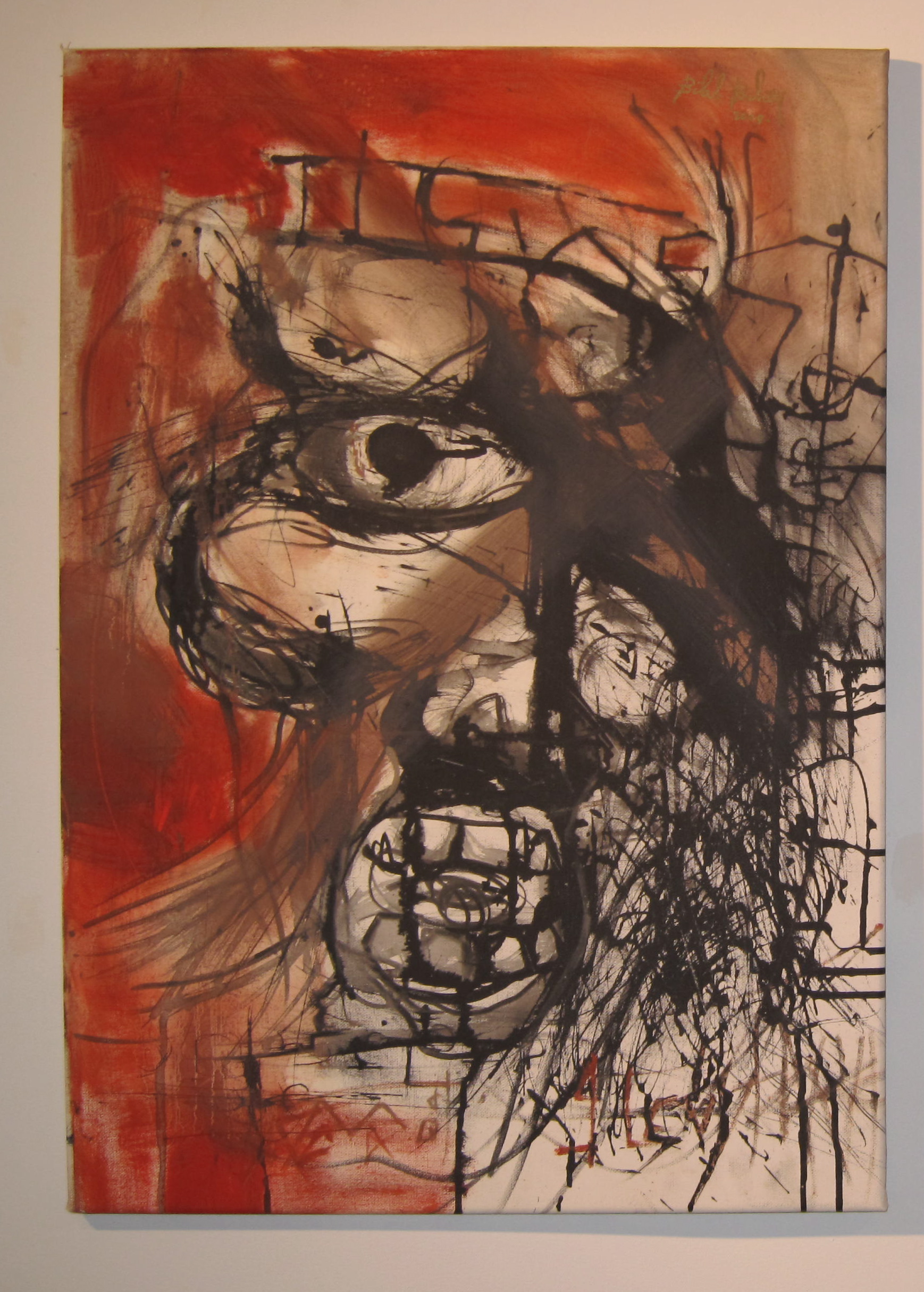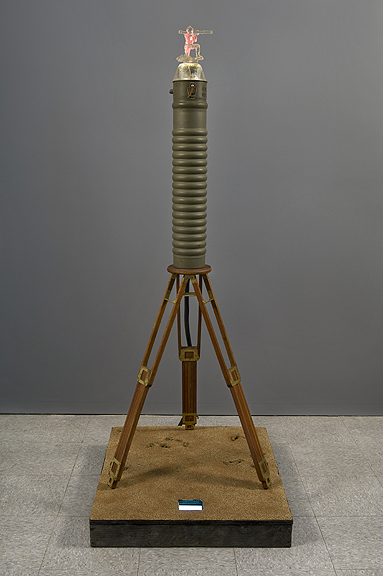Seeking Reconciliation through Art
Sheila Regan profiles the new Tarnish and Gold exhibition, "The Art of Conflict," an ambitious project showing the work of Iraqi and American artists, and their personal responses to the ongoing conflict between the two countries, side by side.




In The Art of Conflict, at Tarnish and Gold Gallery in Northeast Minneapolis, Iraqi and American artists show their work together in a fascinating show dealing with the conflict in Iraq. Utilizing the talents of artists who represent a broad range of wartime experiences — including those of the Iraqi citizens whose home country has been occupied, American veterans who served in the Iraq war, and peace activists decrying the conflict — the show asks the viewers to question their own feelings and thoughts about the war. In addition, the exhibit, by bringing artists from Iraq to Minneapolis, aims to facilitate intercultural dialogue as a step toward healing — even while the U.S.’s occupation in Iraq continues.
The show is sponsored by the Iraqi and American Reconciliation Project (IARP) in Minneapolis and the Muslim Peacemaker Teams in Najaf. According to its website, IARP, which was established as a nonprofit organization in 2007, aims “to promote reconciliation between the people of the United States and Iraq.” They have been involved in such projects as sending water filters to schools in Najaf, and bringing artwork from Iraq to Minneapolis to be shown at coffee shops, community centers, and other public locations.
Tricia Khutoretsky, who curated the exhibit, explains that the difference between those previous endeavors and the current show at Tarnish and Gold is that the earlier artwork they brought over mostly consisted of “work that sells” — that is, landscapes and paintings of traditional Arabian horses. For the current exhibition, IARP is “giving people a chance to express how they feel about the Iraq war,” Khutoretsky explains. The project has been unique in that it allows Western and Iraqi artists to show their work together, to “see where the commonalities are,” Khutoretsky says.
Khutoretsky says she’s been particularly surprised at the differences — in style, tone, and form — between the American and Iraqi artworks included in the exhibit. “Quite a few of the Iraqi artists use an abstract technique,” Khutoretsky remarks. And while artists from both countries show work with a clear and specific point of view, the American artwork tends to be more blatant in its political message. Ghalib Al-Mansouri, once the personal artist and designer for the Saddam Hussein, argues that artists who are capable of innovation aren’t as affected by circumstance. In other words, he says, the message in their artwork comes out through the lens of abstraction, so that it is “not as easily discerned by the common person.”
He uses his own story by way of illustration: During Saddam Hussein’s regime, Al-Mansouri lived in the presidential palace, where he painted realistic portraits, scenes from nature, and images of horses and the desert landscape for Hussein and his family. When speaking of that time at a recent lecture sponsored by the University of Minnesota’s College of Education and Human Development, Al-Mansouri said that he began to suffer, seeing the stark contrast between the decadence and extravagance enjoyed by Hussein and his family and the harsh conditions under which the Iraqi people were living.
When he eventually felt moved to speak out against Hussein’s regime, he was sentenced to life in prison. After the second Iraq war, Al-Mansouri was released, upon which he began working in a new style of painting — he began expressing his worldview and experience through abstract paintings, from that point on eschewing the realistic style he’d worked in previously.
In Al-Mansouri’s War 1, he depicts his experience of the war through textured blobs of blues and browns. The splotches look like water stains, mildew bubbling up in layers of translucent paint. The effect of the painting is a feeling of solitude and despair. In War 2, Al-Monsouri chose bolder colors, creating areas of thick white paint, and strong red strokes. In this later piece, his palette is more diverse, using yellow, brown and black colors to show the emotion, the human disaster of the war.
The Iraqi artists’ works are notable for their use of abstraction, Khutoretsky observes, and also for their “in-your-face” tone. Because many of these artists have lost friends and family members, experiencing both the war and devastation that’s followed it first-hand, their work palpitates with raw emotion.
For example, in Protest, a painting by Bilal Bahir, an artist from Baghdad, a boy’s huge disfigured face is painted with scribbled black brush strokes over a blood-red background. One eye protrudes from the canvas in the upper corner of the painting, and the rest of the face seems to be crossed out. The work is brutal and expressive, the product of an artist who has personally suffered the effects of his country’s conflict.
In Al Monsouri’s work, the palette is diverse, reflective of his first-hand experience of the conflict and its devastation. Bilal Bahir’s work is brutal and expressive, showing the emotion — the human disaster — of the war.
Another Iraqi artist in The Art of Conflict, Faten Al Jumaily has shown work in Minneapolis through IARP before; her work in this show, however, is a response to the war through the particular lens of women’s experience. In her 2004 painting Iraqi Women, the artist creates a pattern of faceless, robed women behind what looks like barbed wire. The colors of the painting are bright, and framed by a deep red background.
In the same lecture for which Al-Mansouri spoke at the University of Minnesota, Al Jumaily described her work, saying that while she intentionally avoids painting details on the faces of the women, the fact that she does not depict them with covered faces s is equally deliberate. Perhaps because her work is more abstract in nature, she has been able to get away with this sort of defiant artistic choice, even during the unsafe social and political atmosphere of her country at the time the work was made, just one year after the Iraq war began.
The American artists included in The Art of Conflict were chosen for the show by jury selection (in addition to a few extra artists that Khutoretsky, herself, chose to round out the exhibition). While some of these U.S.-based artists utilize abstract technique, like the Iraqi artists represented in the show, a few tend toward a more direct, expressly message-oriented method.
Examples of the latter include James Allen’s harrowing mixed media, Middle East Madonna, which juxtaposes an Iraqi mother, a U.S. soldier, and a helicopter; another work in this more representational style, Jim Boden’s devastating Interrogate, centers on a portrait of a flogged prisoner, as seen from the back. Sean Smuda’s collaboratively created Blown Derivatives is more ambiguous in its message, clearly questioning the intentions of the United States military in Iraq, but also reflective of the hope for peace represented by communication and outreach among artists and across borders.
Jane Powers, a peace activist, is showing two mixed media sculptures, both of which reflect a readily evident, anti-war viewpoint. In Smoke ‘Em During an Iraq Night, a plastic soldier slowly revolves on top of a mortar shell casing, mounted atop a tripod which sits on a bed of sand, surrounded by figures laying down, as if dead. At the edge of the sand, a small square screen plays a YouTube video loop showing American soldiers aiming their weapons at civilians. Powers’ other piece, Look into my Heart: Am I the Only Collateral Damage?, features a table made of clear plastic, filled with what looks like blood; at the center of the table, a magnifying glass looks into a translucent heart. In both of Powers’ pieces, the artist challenges her American viewers to question their own complicity and culpability in the Iraq war.
In contrast to Jane Powers’ activist-minded work, Aaron McLeod and Samatha Starbird, two Iraq war veterans, offer more introspective pieces. Like the Iraqi artists, these two artists have experienced the conflict first-hand, as members of the American military; McLeod and Starbird appear to be grappling with their roles as military professionals. Acute observers, both artists offer reflective perspectives: McLeod’s photo-journalistic portraits and Starbird’s stark acrylic pieces spotlight the isolation and internal conflict of the experience of soldiers serving in Iraq.
After seven years, the U.S.’s occupation in Iraq continues, and the devastation in the latter country will no doubt persist long past the date on which the United States finally leaves. The Art of Conflict is a beacon, showing one way in which artists can begin to open up new avenues toward healing as the two countries look toward what is sure to be an uncertain future.
Related exhibition details: The Art of Conflict: Iraqi and American Art in Dialogue, at Tarnish and Gold gallery in Minneapolis, will be on view through August 28.